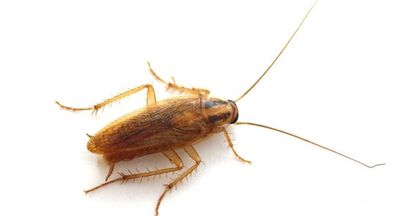Ask About our Military and First Responders Discount
Cockroaches

The German Cockroach, the most prevalent and economically significant cockroach species, enters homes and businesses through the transportation of items. They thrive in restaurants with stock from vendors or employees experiencing domestic issues. Cockroaches require food, moisture, and warmth to survive and reproduce, leading to infestations.
It’s a common misconception that a single cockroach indicates thousands. This likely originated from outdated television commercials promoting over-the-counter sprays.
An infestation is unlikely unless poor sanitary conditions exist. Employees spotting a cockroach at their desk may prompt immediate fogging of the entire office, but this is often unnecessary. The cockroach is most likely a result of a lunch delivery or an employee shopping during their lunch break.
In severe cases, an infestation from a neighboring property may spill over into adjacent rooms, suites, or apartments. A thorough inspection identifies the source and conditions sustaining the infestation. Recurring sightings continue until the source is located and eliminated.
Some customers mistakenly call cockroach infestations “bombing” or “fumigation.” Fumigation is a gas used for specific pest control jobs, not for general household pests like cockroaches. The correct term is fogging, an ultra-low volume treatment that penetrates deep into voids to flush out cockroaches. Fogging is expensive and has minimal residual effect. It’s rarely used in homes or offices but in restaurants, requiring extensive food safety precautions.
Effective cockroach baits are available on the market. These are generally low-toxicity gel baits that attract and kill cockroaches when applied correctly. Bait aversion problems are often due to lack of experience or improper baiting. Bait is the least risky and most effective treatment when used correctly and consistently.
Sanitation is crucial in eliminating the risk of German cockroach infestations. While cockroaches can be introduced into homes or workplaces, they can be quickly eliminated if conditions are suitable. Contrary to popular belief, cockroaches are not the most persistent pest. Good housekeeping practices and diligence can maintain a cockroach-free workplace and home.
Dynamic Pest Solutions in Brambleton, VA Call 866-201-3336
Cookie Policy
This website uses cookies. By continuing to use this site, you accept our use of cookies.